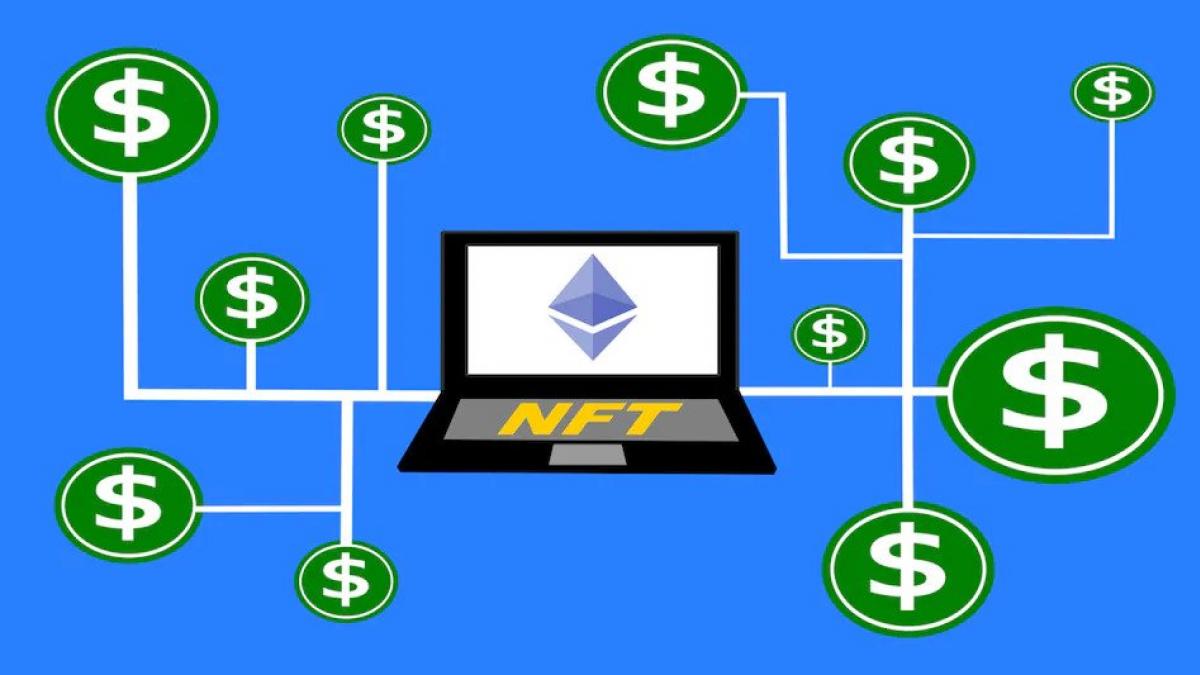Feedback
Will you splurge $449,000 on a pair of sneakers? Let’s rephrase that: Will you splurge $449,000 on a pair of virtual sneakers that you cannot wear? You may or may not ‘just do it’ but someone did. Nike sold a pair of virtual sneakers from its Dunk Genesis Cryptokicks range — a line of non-fungible tokens (NFTs) priced between $2,500 and $449,000 for a pair.
That’s not all. The iconic footwear brand has already earned revenues of $185 million through NFT drops. Dolce & Gabbana (D&G), Tiffany, Gucci, and Adidas have also joined Nike to rake in $240 million through NFTs so far, as they try to turn the digital asset into a serious additional revenue source.
Taking a cue from their global peers, Indian fashion brands also jumped onto the bandwagon at the peak of the NFT mania last year. Ace designer Manish Malhotra launched a five-piece NFT collection—three hand-drawn sketches of garments, an old picture of former model Lisa Ray shot by the designer and a video from one of his shows. Designers Anamika Khanna of luxury brand AK-OK, Raghavendra Rathore and Pankaj & Nidhi were also among the well-known names that launched their digital artworks. Most of them were sold within minutes and for hefty sums. Malhotra’s sketch of a custom outfit designed for Kareena Kapoor called the “Illuminous Showstopper” was sold for Rs 2.8 lakh.
But what is a fashion NFT anyway, you ask? NFTs or non-fungible tokens are blockchain-based digital assets that cannot be replaced nor interchanged for a token of similar value because of their unique properties. Sure, they may work for abstract categories such as art or music or gaming. But how does an intangible digital asset make sense for tangible items like clothes and shoes? Do they have a purpose?
“While the concept of spending real money on clothing that does not physically exist is slightly confusing, virtual possessions do generate real sales,” says designer Malhotra—one of the first designers to launch a fashion NFT in the country. Fashion NFTs, for example, can be virtual garments worn in virtual worlds
Sure, it’s an additional revenue source for designers. But what’s in it for the buyers? Not much, it turns out. A year after fashion joined the NFT craze, it hasn’t progressed beyond offering expensive collectibles. Without valuable use cases for buyers, it has remained an ultra-niche category even within the nascent NFT market. “The regrettable fact is that at this point in time, most NFTs are only being used for marketing communication to ride on the hype. I can think of seven to eight use-cases. But people are just using the word NFT and giving away images of something,” says crypto expert Ajeet Khurana, Founder of Web 3.0 firm Reflexical.
But why must NFTs have use cases at all? It’s an asset class that functions on demand-supply principles. Every time an NFT is resold, it generates a royalty for the original creator. For that to happen, it has to provide impetus to the NFT holder to keep trading in them. “You can’t come, drop it and vanish. That doesn’t work. It’s a responsibility to make sure that the person who bought it can sell it again. But brands (in India) have so far used it just as a marketing gimmick,” says Sandesh B. Suvarna, Vice President at WazirX, which has an NFT marketplace. Any popular NFT collection has made its millions only by constantly providing value to the NFT holders, he adds, giving the example of Nike. The footwear giant bought Web 3 company RTFKT in December 2021 to up its metaverse game. Half of its $185 million NFT revenues are royalties earned through subsequent trading by holders. Plus, it generated over $1.3 billion in secondary volumes.
But the overall NFT market is down in the dumps as trading volumes have crashed 97 per cent since the beginning of the year, going by data hosted on crypto-related data platform Dune Analytics. Besides, the Indian government has levied a flat 30 per cent tax on profits or income gains from virtual digital assets such as cryptocurrencies and NFTs. It seems like the NFT hype has lost its initial euphoria, but some believe the crash is a necessary shake-out of an overheated market before it can find its footing.
Already Nike has set up a store ‘Nikeland’ in the metaverse and Adidas has bought virtual land in the blockchain-backed virtual world of The Sandbox. Another virtual world, Decentraland, has also hosted the Metaverse Fashion Week which had the who’s who of the luxury fashion world participating. Meanwhile, brands are also working on physical-digital bridges. D&G, for instance, has used its NFT as a digital twin. Five NFTs from its range came with custom-fitted physical pieces designed by Domenico Dolce and Stefano Gabbana themselves. Others are figuring out ways to offer exclusive benefits in the physical world such as access to content or custom styles to build connection and loyalty engagement with their users. Gucci’s 4-minute film NFT ‘Aria’ gave buyers an exclusive glimpse into its design and production process by letting them experience the items through virtual reality.
While brands globally are working to discover truly innovative utilities to leverage the new class of buyers, that is not the case among Indian designers experimenting with NFTs. “It is probably because of complexities surrounding blockchain technology, hindrances in interoperability, and a lack of legal framework. The overall concept of NFT is being understood, tried, and tested, considering all the economics involved in it,” says Malhotra.
Copyright©2022 Living Media India Limited. For reprint rights: Syndications Today
Add Business Today to Home Screen
Home
Market
BT TV
Magazine
Menu
Menu
Author
Administraroot


